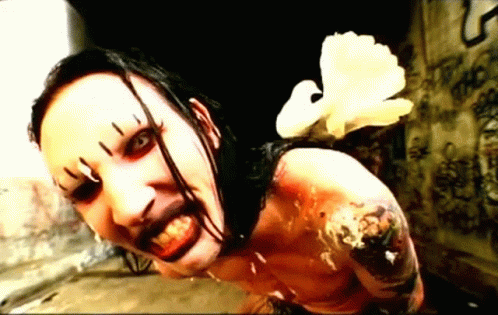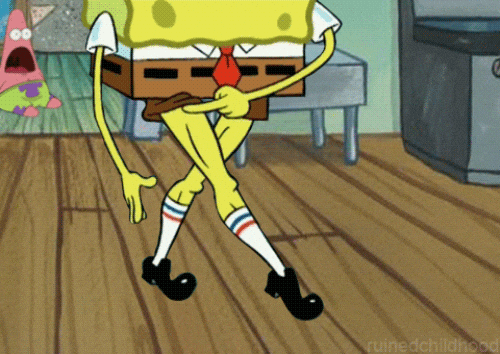I was at breakfast with friends a few weeks ago, when the talk turned — as normal conversations tend to do — towards rib removal.
‘The surgical procedure is called a costectomy,’ a friend explained, then noting the horror and bewilderment on my face she saw the need to elaborate: ‘Basically, they cut you open and remove some of your ribs. The lower ones, the floating type. It seems those are quite useless anyway.’
I opened and closed my mouth a few times before I was able to voice the question that, to me, felt pretty damn fundamental to this topic: ‘Why!?’
‘It improves the shape of your waist. Makes your physique look better and increases your overall hotness. It’s quite a popular body contouring technique.’1
‘People get invasive surgery to remove their ribs, their fucking ribs, just so they look hotter?’
This naive query elicited a few laughs, as my wife rolled her eyes. ‘I’m suprised you didn’t know about this,’ she chided me. ‘You have so little awareness of what’s going on in the world. I have to teach you everything.’
I bristled at this barb but could not deny the truth of it. Simran has a keen grasp on popular culture, and a preternatural knowledge of all things medicine. Insights about cosmetic surgeries are, therefore, the apogee of her expertise. But the scales of human ability must forever remain balanced, and so, her facility in this department means she has not a smidgeon of directional sense and is bereft of any understanding of geography. Countries and capitals mean little to her, and maps may as well be hieroglyphs. I doubt she could locate our house on a street plan.
I did not bring this up as a retort at the time, because: one, I have learnt over the years, through bitter experience, not to taunt my wife in public; and two, I remembered I was, in fact, familiar with this whole business of chopping off one’s ribs. An internet rumour I’d read when I was in University floated up from the depths of my memory. Wasn’t Marilyn Manson, the kooky musician, rumoured to have removed his ribs? In order, if I recall correctly, to be able to — umm, how to phrase this — “perform auto-fellatio”: which is to say, he wanted to suck his own penis.
(I apologise for the graphic content, I do strive to keep this newsletter decent. But look, whatever floats his boat, right? If self-administering oral pleasure is what his sweet dreams are made of, then who are we to disagree?)2

Marilyn’s objective may have been a tad left-field but hacking at the ribcage appears to be a common cosmetic upgrade. Tiny waists, also known as ‘ant waists’ in the trade, are what people covet, and when all other routes to the famed hourglass figure fail, the scalpel is unsheathed. As an article authored by a group of plastic surgeons so dispassionately notes:
….the waist-to-hip ratio (WHR) is a key determinant of attractiveness… A WHR of 0.65 to 0.70 is consistently considered highly attractive in the modern era… Pushing the boundaries of body contouring in the era of modern cosmetic surgery allows one to appreciate the rationale of resecting the floating ribs for aesthetic purposes to achieve an attractive “ant waist”.
To save you the trouble, I scanned the article for the following: “We are kidding”, “Chill, it’s just a joke”, “Just messing with you, don’t snap off your ribs lol”. But none of these appeared in the text. One can only assume the plastic surgeons wrote the passage in all seriousness, that they indeed believe in a rationale for resecting the floating ribs for aesthetic purposes.
It shocked me at first, but upon further contemplation, understanding dawned.
For as long as I can remember, people have made fun of my nose. When I say people I don’t mean strangers — my nose is not bizarre enough to invite comments from random passers-by, thank god — but those who are close to me, my family and friends. To these folks whom I hold dear, the shape and size of my snout has been a source of endless mirth.
Though far from handsome, my nose is not especially grotesque. It cannot hold a candle to the one sported by Roberto Rastapopoulos, for instance. Nevertheless, it is sufficiently bulbous to have become the butt of many jokes.

‘You expect a man to have a nose on his face. Rohan has a face around his nose.’
‘What would you do if you saw Rohan drowning in a pool? Nothing, his nose would always breach the surface.’
‘Rohan has special powers, he can be in two places at the same time. His body will be in one room, his nose in another.’
So fundamental is it to my identity that some of my former schoolmates only know me as the boy with a reedy voice and a giant nose. But with age, I have grown more accustomed to this protuberance. In the 7th century BCE, the legendary physician Sushruta pioneered a type of rhinoplasty, which is one of the earliest known instances of facial reconstruction. This tell us that even two thousand years ago, Indians were burdened by noses so ugly as to trigger medical inventions. My unsightly nose, therefore, is the inheritance of a long tradition and the proud symbol of my lineage. Bearing it became a matter of honour.
A couple of years ago, however, this stoic acceptance was put to the test when a friend offered to redecorate my face. This friend, an accomplished surgeon, spent long minutes detailing the incisions he would make, the way he would move my septum ever so slightly to the right, the cartilage that he would shave, to bequeath me with a new nose: sharp, slim, straight.
I did not know what surprised me more: That he had spent so much time planning my nasal enhancement, or that I was actually tempted by his pitch. The world never tires of urging us to improve ourselves — why should the directive not apply to my nose? Would it not be the same as any other act of self-help, a step towards self-care? And maybe, my heartbeat quickened at the prospect, I could finally start taking selfies without exposing my lush, cavernous nostrils.
Eventually, though, I couldn’t muster up the courage. The trauma of surgery felt too heavy a price to pay, quite literally so given the cost involved. I enjoy running, true, but I am not that much of a masochist. Besides, as I said before, my rhinal oddity has ceased to trouble me. My insecurities now reside in my spindly legs.

I was a scrawny kid in school. Too short, too thin, too mousy. Clothes would hang off me as if draped on a wireframe, my bones would mark hard lines against my skin. This was not on account of any parental negligence. I was not an underfed child — if anything, my mother, and her mother, took pains to overfeed me. Milk, protein, cereals — they did their best to stuff me with all manner of nutrients. Once, my grandmother even tried to make me eat raw chicken. Someone she knew had waxed eloquent about the salutary properties of uncooked poultry, and — carefully eliding any mention of salmonella — convinced her that true strength is gained from eschewing fire and chomping on a bloody breast piece.
I refused to partake, and so, I remained underweight.
Three decades on, I still prefer my chicken cooked and still possess chicken legs. From certain angles my shins resemble the spokes in a bicycle wheel, albeit slightly hairy ones as if they’re trailing cobwebs. This deficiency is not for lack of trying. Thousands of gym visits have failed to elevate me to the vaunted status of the gym stud, I am condemned to be the gym shrimp. In a move that is both creepy and pathetic, I steal glances at the calves that surround me in the gym, on the street, at a cafe. The rippling muscles make me wistful. Oh, to display one’s legs with such élan!
Body dysmorphia and body image issues are heavy words I am loathe to use. I feel none of the crippling anxiety they bring. Yet, every time I wear shorts in public I am self-conscious. Among friends, I force myself to laugh along when their jibes land on my limbs. Sometimes, I join in and mock my knobbly knees, my slender ankles. But my actions have a film of self-loathing, my contempt for my matchstick shanks seeping into my words.
In Materialists, matchmaker Lucy (Dakota Johnson) and private-equity investor Harry (Pedro Pascal) make no bones about craving, and curating, the best life money can buy. A scar on Harry’s leg makes fleeting appearances through their courtship, and in a climatic scene its provenance is revealed.
At 5’ 6”, Harry lacked confidence. His towering wealth failed to compensate for his middling stature. So he chose to grow a little taller. He let doctors break his legs and remake them, adding six inches in the process. I know it sounds stupid, he confides in Lucy, breaking your legs to get a few extra inches, but we keep saying definitely worth it. He has no regrets, he insists the procedure changed his life. Lucy, too, agrees. A body, they concur, is like an apartment. She hints at certain ‘investments’ she made on herself. After all, you have to invest to get the value back.
(Pre-surgery) Harry and I are of similar height — though a few millions off in terms of assets — but I cannot imagine undergoing the ordeal of a leg lengthening operation. To have your tibia splintered and a rod inserted in your limb, to be bed-ridden for days and to wait for months for the bone to fill the gap, and to pay hundreds of thousands of dollars to boot. You have to be a fanatic to do that.
I would never do it for a handful of inches — but what about interventions, like calf implants, that promise meaty legs?
The research I do for this newsletter often takes me to surreal places. In this instance, it led me to Pixee Fox. Few people have pursued a dream with as much zeal as Pixee.
Pixee shot to internet fame a few years ago when she removed six ribs to secure an ‘ant waist’ — and the costectomy is just one of the “more than two hundred plastic surgery procedures” she has undergone. In media appearances, she has spoken of her desire to transform herself into a “living cartoon”, with all the physical characteristics of an anime figure. She has submitted to brow jobs, nose jobs, boob jobs, butt lifts, tummy etchings, face fillings, and much, much more to attain her goal. Stacked against her surgical adventures, calf implants — that grant one’s lower legs “a shapelier and more defined contour” — seem almost pedestrian. For the likes of Pixee, the procedure is akin to a regular GP visit, say, to fix a common cold. And yet, I cannot imagine signing up for it.
No matter how much I abhor my gaunt legs, no matter how often I yearn for the “fuller and more muscular” calves the implants will endow, opting for a surgical solution seems like a step too far. Like buying a Toyota Fortuner, or wearing a sweater in Mumbai.
In a reality TV show episode featuring Pixee, the hosts air similar concerns. While Pixee is adamant that after removing her ribs to get a 14-inch waist she is the happiest she has ever been, one of the hosts looks askance. He suggests she should meet a counsellor. You’re using this to replace something, he says. In the video, you can see Pixee rolling her eyes. She has the rare clarity of knowing what she wants to do with her life. She has a purpose, and is determined to pursue it. The unsolicited advice of two middle-aged men pass by her as the idle wind, leaving her unruffled.
The exchange leaves me torn. Admittedly, Pixee’s is an edge case — few, if any, would endure hundreds of procedures to wrestle their body into a fantastical form. But resorting to plastic surgery, to fix perceived defects, is now routine. Celebrities have started busting the taboo around surgical touch-ups and are spilling the details of their experiments with real-life photoshopping. Besides, these interventions are no longer the preserve of those in show business. In our own country, cosmetic tweaks have gained popularity among all (who can afford it). A 2024 survey recorded over 1.2 million cosmetic procedures in India, the seventh-highest number in the global list.
Isn’t the prevalence of plastic surgery a reflection of popular choice? And isn’t opting to alter your body a matter of individual right and personal liberty? Why then should we frown upon it? But, equally, these ‘choices’ do not occur in vacuum. Don’t social conditioning and deep-seated biases, among other factors, influence the decision to undergo cosmetic procedures? Doesn’t this perpetuate the reinforcing of stereotypes, the glorification of unrealistic body standards? In which case, isn’t the criticism a necessary part of the fight against the idealized, impossible human form?
I cannot presume to know what motivates plastic surgery enthusiasts, and so, I cannot answer these questions.
I can only hope that — as Pixee claims — they are influenced not by external pressures, but by a wish for self-expression. I hope they choose their procedures for their own benefit and to please their own selves. I hope, in other words, that if they decide to remove their ribs, they do it for reasons as compelling and as practical as the one that (allegedly) motivated Marilyn Manson.
Costectomies are also favoured by transgender women and performed for medical reasons. Our breakfast-table discussion, however, was limited to its aesthetic application.



I now want to remove a couple of ribs myself, as they hurt from the laughter after reading your essay. 😂
This is such a pertinent subject, and you’ve tackled it brilliantly with your characteristic humour. I especially appreciate the way you question the illusion of choice in cosmetic enhancements. I was reminded of an essay I’d written on this subject a couple of years ago, and I concur with everything you have to say. After all, we’re only choosing from what’s already been chosen for us!
As always, you never miss a beat, Rohan. I relish every single piece you write.